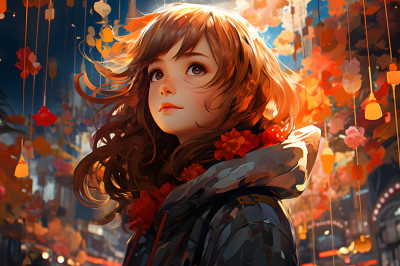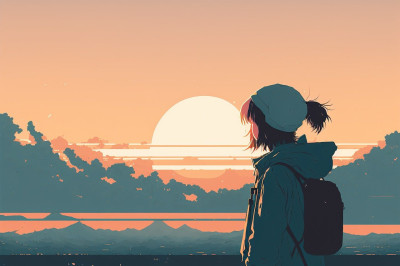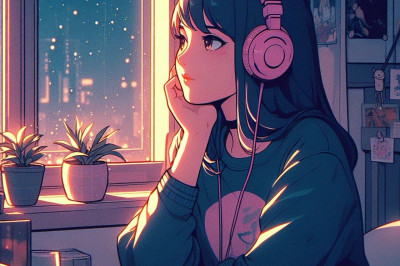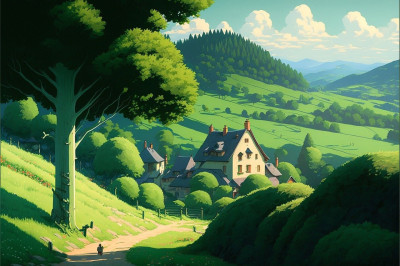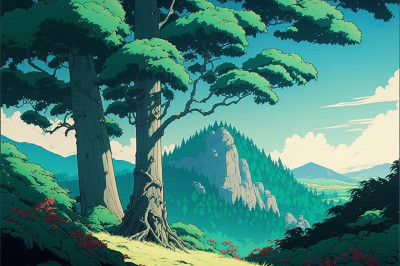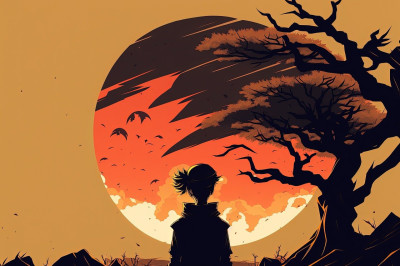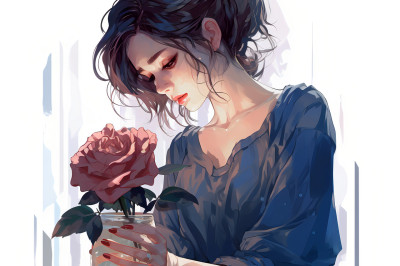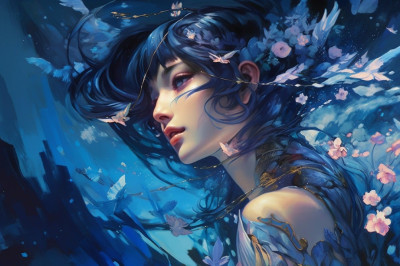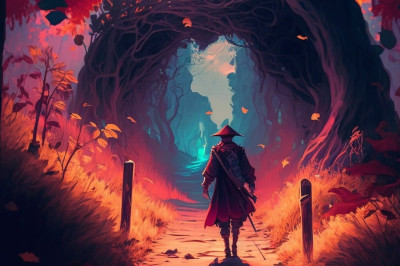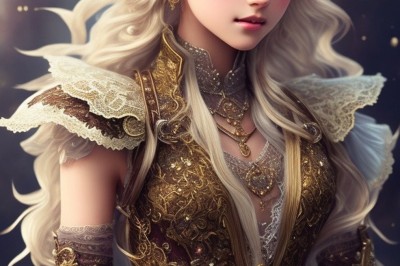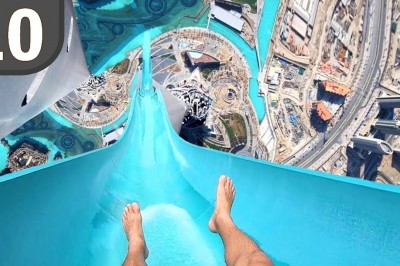The Emergence of CGI in AnimeHistorical Context and Early Adoption
The integration of Computer-Generated Imagery (CGI) into anime began in the late 20th century. The first instances were rudimentary, often limited to background elements or visual effects that were too complex or costly to draw by hand. As technology advanced, so did the ambition of anime creators, leading to more prominent CGI usage in feature films and television series.
CGI's Role in Anime Production
CGI in anime serves multiple purposes, from enhancing traditional 2D animation with three-dimensional backgrounds to creating entire scenes or characters with computer graphics. It allows for dynamic camera movements and detailed environments that would be incredibly time-consuming to animate frame by frame.
Advantages of Using CGI
CGI can streamline the production process, enabling faster creation of complex scenes and effects. It also opens up new possibilities for storytelling, with the ability to depict vast landscapes, intricate machinery, and fantastical creatures in ways that were previously impossible or impractical with traditional techniques.
Challenges and Criticisms
Despite its advantages, CGI's introduction to anime was met with resistance from some fans and animators who favored the traditional, hand-drawn aesthetic. Concerns over CGI looking out of place or lacking the warmth of 2D animation were common. Balancing CGI with traditional animation to maintain the anime feel remains a challenge for the industry.
Technological Advancements and IntegrationSoftware and Hardware Developments
The evolution of CGI in anime is closely tied to advancements in software and hardware. Early CGI was limited by processing power and the capabilities of animation software. However, as technology improved, so did the quality and complexity of CGI, allowing for more seamless integration into anime productions.
Blending CGI with Traditional Animation
The process of combining CGI with hand-drawn animation has become more sophisticated over time. Techniques such as cel-shading allow CGI elements to mimic the look of traditional animation, helping them blend more naturally into the scene. This hybrid approach has become a hallmark of modern anime, with many productions using a mix of 2D and 3D animation.
Impact on Anime Genres and StorytellingGenre Expansion
CGI has had a significant impact on the types of stories that can be told through anime. Genres such as science fiction and fantasy have particularly benefited from the ability to depict elaborate action sequences and otherworldly settings with greater ease and detail.
New Storytelling Possibilities
With the advent of CGI, anime directors and writers are no longer constrained by the limitations of physical sets or the labor-intensive nature of hand-drawn animation. This has led to more ambitious storytelling, with complex narratives that can be visualized in stunning detail and scope.
The Future of CGI in AnimeInnovations on the Horizon
As CGI technology continues to evolve, its role in anime is likely to grow even further. Emerging techniques like virtual reality, motion capture, and artificial intelligence are poised to offer new tools for anime creators, potentially revolutionizing the way stories are told and experienced.
The Ongoing Debate
The use of CGI in anime will continue to be a topic of discussion among creators and fans alike. As the industry explores the balance between innovation and tradition, the conversation around CGI's place in anime is an ongoing narrative that will shape the medium's future.
The Evolution of Computer-Generated Imagery in AnimeEarly Experiments with CGI
The use of computer-generated imagery in anime can be traced back to the late 1980s and early 1990s. During this period, CGI was primarily used for non-character elements, such as vehicles, mechs, and backgrounds. One of the pioneering works to incorporate CGI was the 1983 film "Golgo 13: The Professional," which featured a 3D helicopter sequence that was groundbreaking for its time. As technology advanced, so did the complexity of the CGI elements, with shows like "Ghost in the Shell" and movies such as "Akira" showcasing more sophisticated integration of computer graphics with traditional animation.
Integration of CGI and Traditional Animation
By the late 1990s and early 2000s, anime studios began to experiment with blending CGI with hand-drawn animation. This hybrid approach allowed for more dynamic camera movements and detailed environments, which were difficult to achieve with traditional animation alone. Series like "Zoids" and "Blue Submarine No. 6" exemplified the potential of this combination, using CGI to animate complex mechanical designs and underwater scenes, respectively.
Full CGI Anime Productions
The mid-2000s saw the emergence of fully CGI anime productions. These shows and films were entirely created using computer graphics, a departure from the traditional hand-drawn style. "Appleseed" (2004) and its sequel "Appleseed Ex Machina" (2007) were among the first to adopt this approach, offering a glimpse into what a fully computer-generated anime could look like. Despite the initial mixed reactions from audiences accustomed to traditional animation, this format gained traction, leading to more fully CGI titles like "Knights of Sidonia" and "Ajin: Demi-Human."
Advancements in CGI Techniques
As CGI technology continued to evolve, anime studios began to employ more sophisticated techniques. Motion capture became a tool for creating more realistic character movements, while advancements in rendering technology allowed for better integration of light and shadow, giving CGI elements a more natural look within the traditionally animated scenes. The "Fate" series, for example, utilized advanced CGI to create visually stunning battle sequences that would have been nearly impossible with traditional animation alone.
The Rise of 3D Character Models
The use of 3D character models in anime has been one of the most significant changes brought about by CGI. Early attempts often looked out of place against 2D backgrounds, but as the technology improved, so did the seamless blending of 3D models with their environments. This can be seen in series like "Love Live!," where 3D models are used for complex dance sequences, and "Land of the Lustrous," which features characters that are entirely 3D, yet maintain an anime aesthetic.
Current State and Future Prospects
Today, CGI is an integral part of the anime industry, with nearly every production incorporating some level of computer-generated imagery. The current state of CGI in anime is characterized by its diversity in use—from subtle enhancements in traditional 2D animation to fully 3D-rendered worlds. As technology continues to advance, we are likely to see even more innovative uses of CGI, potentially leading to new genres and storytelling techniques within the medium. Studios like Ufotable have pushed the boundaries of what CGI can do in anime, particularly with their work on the "Demon Slayer" series, which has been praised for its fluid animation and stunning use of digital effects. Looking forward, the evolution of CGI in anime promises to redefine the limits of the art form, offering creators and audiences alike new and exciting possibilities.
The Benefits of CGI in Anime ProductionEnhanced Visual Quality
CGI has revolutionized the visual aspect of anime by providing creators with tools to produce high-quality graphics that were once impossible or too costly to achieve with traditional animation techniques. The use of computer-generated imagery allows for more detailed and complex scenes, including intricate backgrounds, dynamic lighting effects, and realistic textures. This level of detail contributes to a more immersive viewing experience, drawing audiences into the worlds created by anime artists.
Increased Efficiency and Productivity
The integration of CGI into anime production has significantly streamlined the animation process. Tasks that once took days to complete by hand can now be accomplished in a fraction of the time with the aid of computer software. For instance, repetitive elements such as crowd scenes or complex mechanical objects can be replicated and animated with consistency and precision. This efficiency not only speeds up production but also allows studios to allocate more time to creative aspects of the project, such as character development and storytelling.
Cost-Effectiveness
While the initial investment in CGI technology and training can be substantial, the long-term cost savings are considerable. Once assets are created in CGI, they can be reused and modified for different scenes or even subsequent projects, reducing the need for continuous redrawing. This reuse of assets can lead to significant reductions in labor and material costs, making high-quality anime production more accessible to studios operating on various budgets.
Creative Flexibility and Experimentation
CGI opens up a realm of possibilities for anime creators, allowing them to experiment with styles and techniques that would be challenging or impossible to replicate with traditional animation. Artists can easily manipulate CGI models to test different camera angles, movements, and compositions without the need to redraw entire scenes. This flexibility encourages innovation and can lead to unique visual storytelling that pushes the boundaries of the medium.
Seamless Integration of 2D and 3D Elements
The use of CGI enables a seamless blend of 2D and 3D elements within the same frame, enhancing the depth and dynamism of anime. This hybrid approach allows for 3D models to be used for complex action sequences or machinery, while traditional 2D animation can be preserved for character interactions and emotional moments. The result is a cohesive visual experience that leverages the strengths of both techniques.
Scalability for Large Projects
For large-scale anime productions, CGI provides a scalable solution that can accommodate the demands of extensive world-building and complex narratives. With CGI, the scope of a project is not limited by the number of available animators or the constraints of physical space. Instead, digital environments can be expanded and populated with characters and objects to an extent that would be impractical with traditional methods.
Accessibility for International Collaboration
CGI software and assets can be shared digitally, making it easier for international teams to collaborate on anime productions. This accessibility fosters a global approach to anime creation, where talent from different countries can contribute to a project without the need for physical relocation. The ability to work remotely on a shared digital platform also allows for a more diverse range of creative input and cultural influences within the anime industry.
Challenges and Criticisms of CGI in AnimeMaintaining Aesthetic Consistency
One of the primary challenges in integrating CGI with traditional 2D anime is maintaining a consistent aesthetic. Anime fans often cherish the hand-drawn quality of 2D animation, which can be difficult to replicate with CGI. The stark contrast between 3D models and 2D backgrounds or characters can sometimes disrupt the visual flow, leading to a disjointed viewing experience. Achieving a seamless blend requires meticulous attention to the art style, lighting, and texture work to ensure that CGI elements do not stand out unnaturally.
The Uncanny Valley
CGI in anime often faces the hurdle of the uncanny valley, a concept where computer-generated characters or objects that look almost, but not exactly, like real humans cause a response of unease or revulsion among some viewers. This is particularly challenging when CGI is used to create human characters in anime, as slight imperfections in movement or appearance can be jarring. Overcoming the uncanny valley requires sophisticated animation techniques and a deep understanding of human expressions and movements.
High Production Costs and Technical Expertise
The cost of producing high-quality CGI can be significantly higher than traditional 2D animation. This is due to the need for advanced software, hardware, and skilled professionals who specialize in 3D modeling, rigging, and animation. Smaller studios may struggle with the financial and technical demands of CGI, potentially leading to lower-quality output that can negatively impact the reception of the anime.
Audience Reception and Resistance to Change
A segment of the anime community is resistant to the use of CGI, preferring the classic look and feel of hand-drawn animation. This resistance can be rooted in nostalgia or a belief that CGI cannot capture the same emotional depth as traditional animation. As a result, anime that heavily utilizes CGI may face criticism or be less well-received by these fans, regardless of the quality of the CGI work.
Balancing Artistic Expression with Technological Advancements
Anime is known for its unique artistic expression, with each studio and creator having their own distinctive style. CGI can sometimes impose limitations on this expression, as certain artistic nuances are difficult to replicate with 3D models. Animators must find a balance between leveraging the technical advantages of CGI and preserving the artistic qualities that define anime.
Technical Limitations and Resource Constraints
While CGI technology has advanced significantly, there are still technical limitations that can affect the quality of the final product. Realistic hair, clothing physics, and fluid dynamics are challenging to render convincingly. Additionally, smaller studios may lack access to the latest technology or sufficient computing power, leading to CGI that can look outdated or less polished compared to larger productions.
Integration of Action Sequences
Action sequences in anime are often dynamic and fluid, with a high emphasis on choreography and impact. Translating this to CGI can be difficult, as the weight and physics of 3D models can sometimes result in less impactful or less fluid action scenes. Animators must work diligently to ensure that CGI action sequences match the intensity and excitement of their 2D counterparts.
Training and Skill Development
The shift towards CGI requires animators to develop new skills that are not traditionally part of 2D animation training. This learning curve can be steep and time-consuming, potentially leading to a shortage of skilled CGI animators in the industry. Studios must invest in training and development to build a workforce capable of producing high-quality CGI anime.
Preserving the 'Soul' of Anime
Critics often argue that CGI lacks the 'soul' or 'heart' that is intrinsic to hand-drawn animation. This intangible quality is attributed to the individual artist's touch, which can be lost when transitioning to computer-generated imagery. Finding ways to infuse CGI with the same level of personal artistry and emotional resonance remains an ongoing challenge for the industry.
Notable CGI Anime Productions and MilestonesEarly Experiments with CGI in Anime
The use of computer-generated imagery in anime can be traced back to the late 1980s and early 1990s. One of the earliest examples is the 1983 film "Golgo 13: The Professional," which incorporated 3D CGI for certain scenes, such as the helicopter sequence. This marked a significant step in integrating computer graphics with traditional animation techniques.
Breakthroughs in the 1990s
The 1995 release of "Ghost in the Shell" directed by Mamoru Oshii was a landmark for CGI in anime. The film seamlessly blended 2D animation with 3D CGI, creating a visually stunning cyberpunk world that was highly influential for future productions. Another notable title from this era is "Neon Genesis Evangelion" (1995), which used CGI to animate complex mechanical objects like the Evas and Angels, setting a new standard for mecha anime.
Advent of Fully CGI Anime Series
In the early 2000s, we saw the advent of fully CGI anime series. "Final Fantasy: The Spirits Within" (2001), although not a commercial success, was a milestone for photorealistic CGI animation. Following this, "Appleseed" (2004) and its sequel "Appleseed Ex Machina" (2007) pushed the boundaries further with their detailed CGI and motion capture technology.
Integration in Mainstream Anime
By the 2010s, CGI became more prevalent in mainstream anime productions. "Attack on Titan" (2013) utilized CGI to animate the Titans and certain action sequences, enhancing the dynamic and visceral combat scenes. "Knights of Sidonia" (2014) was one of the first anime series to be fully produced using CGI, showcasing the potential for CGI to carry an entire series.
CGI in Anime Films
Anime films also embraced CGI, with "Stand by Me Doraemon" (2014) being a fully CGI film that brought the beloved character to life in a new dimension. "Expelled from Paradise" (2014) used CGI to create a visually impressive and fluid science fiction world.
Advancements in CGI Techniques
The development of new CGI techniques has continued to transform anime production. The integration of cel-shading, which gives 3D models a 2D appearance, has become more sophisticated, as seen in "Land of the Lustrous" (2017). This series is notable for its unique visual style that blends the line between 2D and 3D animation.
The Influence of CGI on Anime Aesthetics
CGI has not only changed the way anime is produced but also its aesthetics. "Beastars" (2019) and "Dorohedoro" (2020) are prime examples of how CGI can be used to create distinct visual styles that stand out from traditional 2D animation. These series have been praised for their innovative use of CGI to enhance their storytelling.
The Role of CGI in Anime's Global Expansion
As anime continues to grow in popularity worldwide, CGI has played a crucial role in its expansion. The production of Netflix original anime series like "Ultraman" (2019) and "Ghost in the Shell: SAC_2045" (2020) demonstrates the platform's investment in high-quality CGI anime, making it accessible to a global audience.
The Future of CGI in Anime
The future of CGI in anime looks promising, with ongoing improvements in technology and software. Upcoming productions continue to push the envelope, with audiences eagerly anticipating the next breakthroughs that will define the new era of anime.
The Integration of CGI with Traditional 2D AnimationThe Evolution of CGI in Anime
The use of computer-generated imagery (CGI) in anime has evolved significantly over the years. Initially, CGI was used sparingly in anime, often for complex scenes that were difficult to animate by hand, such as large crowd scenes or intricate mechanical objects. As technology advanced, CGI became more prevalent, with entire sequences or characters being rendered in 3D. This evolution has led to a new era where CGI and traditional 2D animation are not separate entities but are integrated to create a seamless visual experience.
Techniques for Combining CGI and 2D AnimationBackgrounds and Environments
One of the most common applications of CGI in anime is the creation of backgrounds and environments. Artists can craft detailed and expansive settings that would be time-consuming to draw by hand. These 3D backgrounds are then carefully shaded and rendered to match the aesthetic of the 2D characters, allowing for a harmonious blend between the two mediums.
Dynamic Camera Movements
CGI enables dynamic camera movements that are challenging to achieve with traditional 2D animation. By placing 2D characters within a 3D space, animators can simulate complex camera techniques such as tracking shots, zooms, and rotations, adding a cinematic quality to the animation.
Complex Action Sequences
Action sequences often benefit from the integration of CGI, as it allows for more fluid and intricate movements. Fight scenes and high-speed chases, in particular, can be enhanced with 3D models that provide a consistent level of detail and allow for more ambitious choreography.
Vehicle and Mecha Animation
Vehicles, robots, and mecha are frequently animated using CGI due to their mechanical nature, which requires precise and consistent proportions. These CGI models are then composited with 2D characters, ensuring that the mechanical elements interact believably with the hand-drawn world.
Challenges in Blending CGI with 2D AnimationMaintaining Artistic Consistency
One of the biggest challenges in integrating CGI with traditional 2D animation is maintaining a consistent art style. CGI elements must be carefully designed and rendered to match the line work and shading of the 2D elements, ensuring that the final product feels cohesive.
Balancing Detail and Simplicity
CGI can often produce a level of detail that surpasses what is achievable with traditional 2D techniques. Animators must find a balance, simplifying CGI elements when necessary to prevent them from overshadowing the 2D animation or making the scenes feel disjointed.
Technical Limitations and Solutions
While CGI offers many advantages, it also comes with technical limitations. Issues such as rendering times and the complexity of integrating different software can pose challenges. To address these, studios often develop proprietary tools and workflows that streamline the process of combining CGI with 2D animation.
Impact on the Anime Industry
The integration of CGI with traditional 2D animation has had a profound impact on the anime industry. It has opened up new possibilities for storytelling and visual expression, allowing creators to bring to life scenes that would have been impossible or prohibitively expensive to animate by hand. This fusion of techniques has also led to the development of new skill sets for animators, who must now be adept in both traditional and digital forms of animation.
As the technology continues to improve, the integration of CGI and 2D animation is likely to become even more seamless, further transforming the landscape of anime production.
The Future of CGI in Anime: Innovations and TrendsHyper-Realistic Character Models
The evolution of CGI technology is leading to the creation of hyper-realistic character models that blur the line between animation and live-action. Advances in motion capture and facial recognition are enabling animators to translate the subtlest human expressions onto animated characters, providing a new level of emotional depth and realism.
Enhanced World Building
CGI is set to revolutionize world-building within anime, allowing for the creation of vast, immersive environments that were previously impossible to render with traditional animation techniques. This includes dynamic weather systems, intricate cityscapes, and expansive fantasy worlds that react and evolve in real-time, providing a more engaging viewer experience.
Real-Time Rendering
The integration of real-time rendering engines, like those used in video game development, is beginning to influence anime production. This technology allows for immediate feedback and adjustments during the animation process, significantly reducing production times and enabling more complex scenes and effects.
AI-Driven Animation
Artificial intelligence is poised to play a significant role in the future of CGI in anime. AI algorithms can assist in animating complex scenes, predicting physics and movement, and even generating background characters autonomously. This not only speeds up the production process but also opens up new possibilities for storytelling.
Virtual Reality and Interactive Experiences
As virtual reality technology matures, anime is expected to expand into fully interactive experiences. Viewers may be able to step into the worlds of their favorite shows, interact with characters, and influence the narrative. This trend could redefine the boundaries between anime and gaming.
Blending Traditional and CGI Techniques
A growing trend is the seamless blending of CGI with traditional hand-drawn animation. This hybrid approach preserves the aesthetic appeal of anime while benefiting from the versatility of CGI. It allows for more expressive character animations and dynamic camera movements that complement the hand-drawn art.
Sustainable Production Practices
CGI is also contributing to more sustainable production practices. Digital workflows reduce the need for physical materials and allow for remote collaboration, minimizing the environmental impact of anime production. Studios are likely to continue adopting these practices as they become more cost-effective and environmentally conscious.
Customizable Content
Advancements in CGI may lead to customizable anime content, where viewers can alter character appearances or choose different story paths. This personalization could extend to merchandising, with fans being able to create and order 3D-printed figures of characters with their chosen designs.
Global Collaboration
The future of CGI in anime includes increased global collaboration, as technology enables studios around the world to work together more seamlessly. This could lead to a fusion of styles and techniques, broadening the appeal of anime and introducing new creative perspectives.
Deep Learning for Enhanced Creativity
Deep learning techniques are expected to augment the creative process, with AI suggesting design variations, story elements, and even creating entire short sequences. This could allow for more experimental anime productions and help artists to explore new narrative techniques.
Accessibility for Independent Creators
As CGI tools become more user-friendly and affordable, independent creators and small studios will have greater access to high-quality animation resources. This democratization of technology could lead to a surge in indie anime productions, diversifying the content available to audiences.
Ethical Considerations and Authenticity
With the rise of CGI, the anime industry will need to navigate ethical considerations, particularly regarding the preservation of the art form's authenticity. Discussions around the use of CGI to replace traditional methods and the potential loss of jobs will be crucial as the industry evolves.
By embracing these innovations and trends, the anime industry is set to enter a new era of storytelling and visual expression, powered by the limitless potential of computer-generated imagery.
The Impact of CGI on the Anime IndustryEnhanced Visual Quality and Creativity
The integration of Computer-Generated Imagery (CGI) into anime production has significantly elevated the visual quality of anime. With CGI, creators can achieve a level of detail and fluidity in animation that is difficult or sometimes impossible to replicate with traditional hand-drawn techniques. This has led to more dynamic camera movements, intricate backgrounds, and realistic effects, which contribute to a more immersive viewing experience. The ability to render complex scenes and elements, such as large-scale battles, fantastical creatures, and futuristic environments, has expanded the creative horizons for anime storytellers.
Streamlining Production Processes
CGI has streamlined many aspects of the anime production process. Tasks that once took days to complete manually can now be accomplished in a fraction of the time with the aid of computer software. For instance, 3D models of characters and objects can be reused and manipulated for different scenes, saving time and resources. This efficiency has also made it possible for studios to produce anime with consistent quality at a faster pace, meeting the growing demand for content in the global market.
Opening New Markets and Audiences
The use of CGI in anime has played a role in broadening the appeal of the medium beyond its traditional fan base. High-quality CGI can make anime more accessible and attractive to international audiences who might not be accustomed to the aesthetic of traditional 2D animation. This has opened up new markets for anime productions and has contributed to the global rise in popularity of the medium.
Challenges and Criticism
Despite the advantages, the incorporation of CGI into anime has not been without its challenges and criticism. Some purists argue that CGI can detract from the unique charm and artistry of hand-drawn animation, leading to a loss of the traditional anime aesthetic. There are also concerns about the overreliance on CGI leading to a homogenization of visual styles. Moreover, the anime industry has faced challenges in integrating CGI seamlessly, with some productions receiving criticism for jarring transitions between 2D and 3D elements.
Economic Implications
The economic implications of CGI on the anime industry are multifaceted. On one hand, the use of CGI can reduce production costs by cutting down on labor-intensive processes. On the other hand, the initial investment in CGI technology and training can be substantial for studios. The cost-saving aspects of CGI can also lead to a competitive advantage for larger studios, potentially creating a barrier to entry for smaller or independent creators who may lack the resources to invest in such technology.
Future Prospects
As technology continues to advance, the role of CGI in anime is likely to grow even more prominent. With developments in artificial intelligence and machine learning, there may come a time when CGI can produce animation that is indistinguishable from hand-drawn art, or perhaps even surpass it in quality and expression. The anime industry is poised to continue evolving with these technological advancements, potentially leading to new forms of storytelling and artistic expression that are currently unimaginable.












